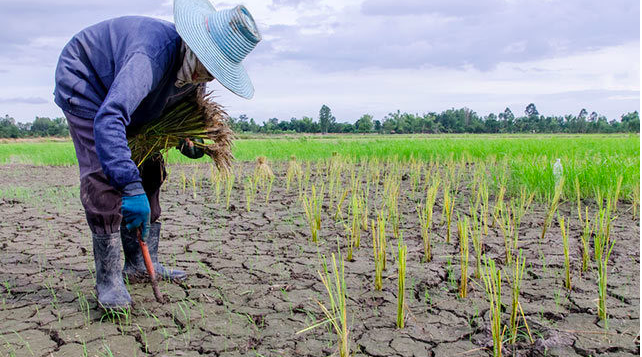
The El Niño phenomenon has affected the farmlands in Central Visayas, including some areas in Cebu. | photo from Cebu.gov.ph
CEBU CITY, Philippines – The Cebu Provincial Government has declared the entire province under a state of calamity.
This decision follows the submission of initial reports to the provincial government, detailing the damage and losses to crops and livestock in several areas of the province caused by the ongoing drought from the El Niño phenomenon earlier this year.
Cebu Governor Gwendolyn Garcia announced that, based on the extent of the damage to the livelihoods of farmers and fisherfolk, the provincial government is constrained to declare a state of calamity.
“Today [May 17], I will issue an executive order that will put the entire province in the state of calamity and will be further supported by a board resolution that will be passed when the provincial board meets this Monday [May 20],” Garcia said during the press conference on May 17.
Cebu City declares state of calamity in 28 mountain barangays due to El Niño
Cebu City water crisis: Rama says no council approval needed for P96.94-M calamity funds
Garcia announced plans to convene with all mayors in the province on May 23 to further discuss strategies for addressing the current challenges.
In addition, she stated that she would be meeting with the Philippine Crop Insurance Corporation (PCIC).
The governor emphasized that the provincial government has ensured that practically all farmers are covered under the PCIC program, with the province covering the insurance premiums.
With the initial damage report now available, Garcia expects the PCIC to provide appropriate compensation for the affected farmers and fisherfolk.
Meanwhile, Provincial Agriculturist Roldan Saragena presented the initial damage assessment and losses report for Cebu Province as of May 16, 2024, collated from 32 local government units that submitted their reports.
El Niño causes P4 billion agriculture losses
In his report, the partial total losses were valued at P176,874,197.61, affecting 12,312 farmers and fisherfolk across a total area of 3,179.32 hectares.
Saragena explained that the valuation of losses considered the developmental stage of crops and fisheries, along with factors such as input costs, severity of damage, and projected yield.
Crops and fisheries classified as “free productive” were evaluated based on their expected yield, using farmgate prices as a reference point for valuation.
In cereals, rice cultivation suffered losses affecting 160 farmers across 108.24 hectares, with a total value of P4,458,009.63. Corn production also bore the brunt of the heatwave, which impacted 3,516 farmers over 2,404.56 hectares. It resulted in losses valued at P77,963,561.66.
Similarly, the vegetable sector faced significant setbacks, with 3,086 affected farmers and losses amounting to P62,878,064.12 over 347.87 hectares. Fruit trees, including cacao, banana, mango, and guyabano, recorded losses impacting 5,272 farmers across 289.01 hectares. It totals P27,939,696 value loss.
Additionally, root crops such as cassava, gabi, and sweet potato incurred losses affecting 254 farmers over 27.90 hectares, with a total value of P2,747,566.20.
In the fisheries sector, both fishpond and marine-based activities faced challenges. The tilapia fishpond sector witnessed losses impacting 15 fisherfolk across 0.54 hectares, which amounted to P519,300.
Similarly, marine-based activities, particularly seaweed cultivation, experienced setbacks affecting 9 fisherfolk over 1.20 hectares. It resulted in losses valued at P368,000.00.
ALSO READ

